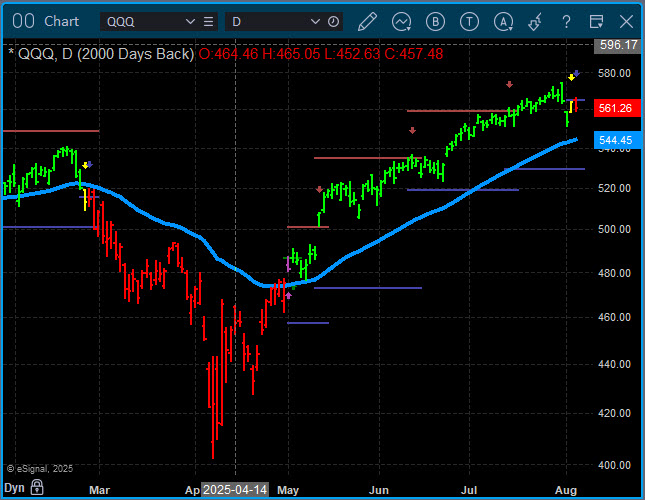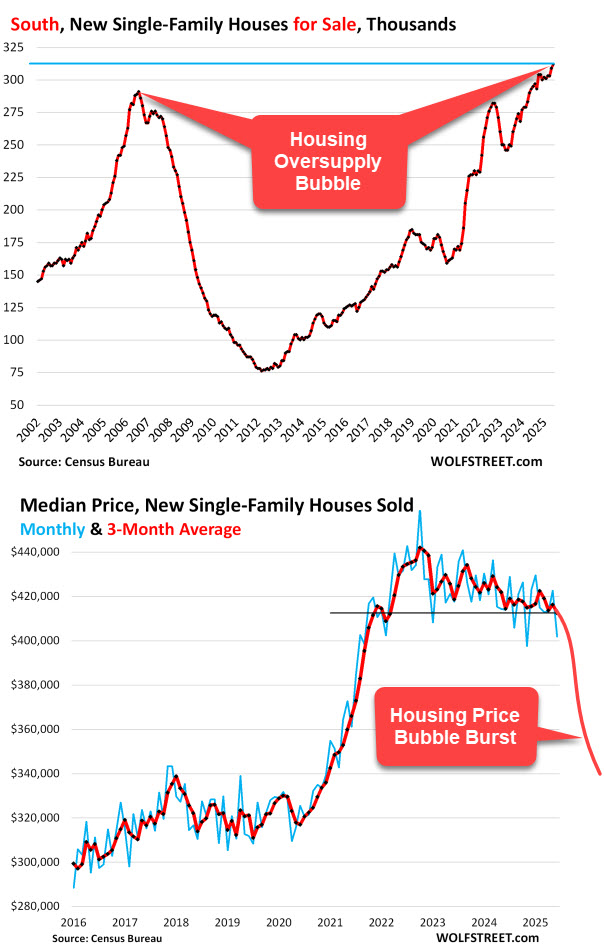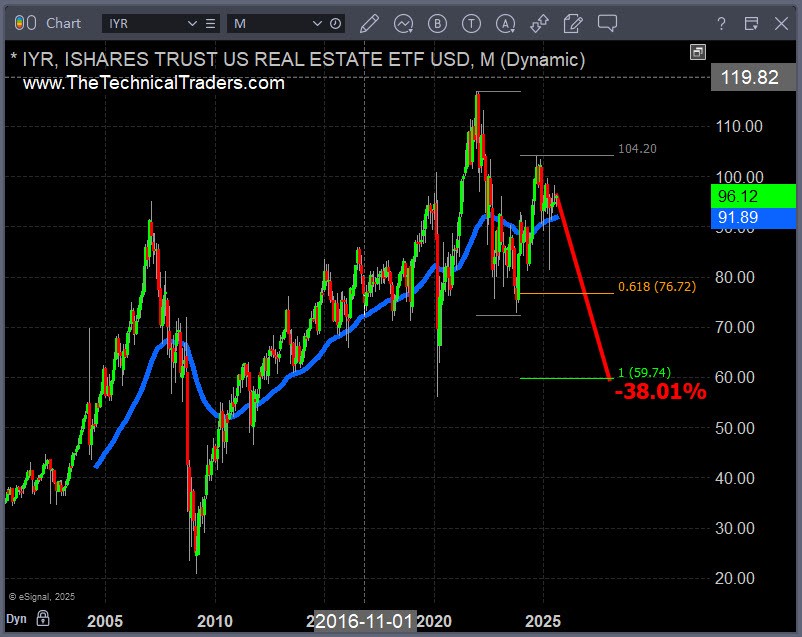The market doesn’t reward emotional investors forever. It rewards those who have a plan before things move; who follow structure, not feelings or their emotions; and who focus on protection first, opportunity second.
By Chris Vermeulen, Chief Investment Officer, TheTechnicalTraders.com
There’s a moment most investors face—not during a crash, but after it. You followed your rules. You protected capital. You moved to safety, or at least I hope you did, and you didn’t panic out near the bottom of correction.
And then—almost without warning—the market roars back to life.
Indexes surge. Stocks rip higher. CNBC is buzzing. Everyone seems to be back in the game.
And you? You’re still sitting in cash, waiting for confirmation, wondering if you’ve missed it. Wondering if playing defense just cost you a shot at a major gain.
That sinking feeling? It’s not greed. It’s something deeper. It’s the grief of doing the right thing and it feeling wrong.
Why It Hurts So Much to Sit Out a Rally
A longtime member once described it perfectly:
“It’s like we were thrown off a beautiful sailboat headed into the sunset, while we’re bobbing on a raft with no motor, just trying to stay afloat.”
That image resonates. Because when the market turns sharply upward after weakness, protecting capital suddenly feels like missing out. And the more others brag about their wins—or the media flashes double-digit gains—the more intense that emotional weight becomes.
But here’s what’s often forgotten: not all rallies are real. Some are driven by short-covering. Some are mechanical. Some fade just as fast as they started. What looks like strength might just be a bounce followed by more selling.
Jumping in at that moment often means buying late, buying risk, and abandoning what kept you safe in the first place, and this is when your emotions take over of your decision making and things go from good to bad.
Fun Fact: Did you know that your personality type plays a big role in your success and style of trading and investing? I share the 16 different personality types and a quiz to identify your personality, how it affects your ROI, and what you need to do to correct it.
The Hardest Part Isn’t the Decline. It’s the Rebound Without You.
This dynamic is especially hard for self-directed traders. Most aren’t sitting on the sidelines because they want to be. They’re out of sync, the got scared out, and took a loss. They want back in—but don’t have the tools or clarity to do so confidently.
That’s when something predictable happens: they start searching for solutions.
They buy trading courses. They study chart setups. They hunt for strategy guides and “learn to fish” promises. But the truth hits hard: trading well isn’t just about knowing what to do. It’s about executing it—consistently, unemotionally, without second-guessing.
And most discover, painfully, that they don’t have the time, discipline, or structure to pull it off alone.
As one member recently put it:
“Before finding Chris Vermeulen, I was completely inapt and too anxious to manage money by myself. Chris has saved me. He has protected and increased my principal and given me confidence to manage my own money—safely, without stress.”
The Hidden Trigger That Sends Investors Searching for Help
Here’s something most won’t admit out loud: people don’t usually seek guidance when things are calm. They wait until one of two things happens:
- The market breaks to new highs without them.
- Their account takes a hit they weren’t ready for.
Both are reactionary. Both come too late. And that’s the core problem.
You can’t rebuild a plan after the damage is done. You can’t “learn to trade” when the market’s already sprinting away from you. And you certainly can’t buy peace of mind in a course or book when the emotional storm is already raging.
Real protection starts before the event.
Real growth happens by following a structure that prepares in advance—not one that reacts afterward.
A Quiet Example: The Nasdaq Reversal and the Calm That Came With It
At the end of July, while many were buying back in late—or still on the sidelines entirely—our strategy caught the Nasdaq reversal and locked in an calm and easy 15+% gain.
It wasn’t a guess. It wasn’t chasing. It was just the next logical signal in a structured process that avoids drawdowns, favors clarity over confusion and emotions, and prioritizes capital protection first.

That’s the foundation I teach in my Asset Revesting strategy book. It’s not designed to catch every rally. It’s built to sidestep market risk and participate in real, sustainable trends. Even if it means sitting in cash during emotional upswings.
Meanwhile, the Real Storm May Be Just Starting
If you’re feeling FOMO now, imagine what happens when something more serious cracks. Wolf Street recently published a sharp warning on Housing Bubble 2. Their charts show clear evidence that home prices—especially in overheated urban and coastal markets—are decoupling from reality again. Mortgage demand is falling. Prices are flattening. And investors with second homes and Airbnb rentals are exposed.

Real Estate ETF – REIT
Real estate ETFs known as a REITs (real estate investment trust) allows investors to own real estate through a fund to buy and sell with ease. During the 2008 financial crisis IYR fund fell over 75%. And looking at the chart from a technical analysis stand point, it is showing a 38% decline is likely to happen in the next 12 months.

If the housing market stumbles, it won’t stay isolated, and this is what I talk about in my monthly investor mentoring sessions, and with subscribers to my newsletter.
Most Americans’ two biggest assets are their home equity and retirement account. If one falls, they often panic with the other.
That’s why sitting in cash sometimes feels wrong—until the market reverses and you realize you were the only one not hurt. That peace of mind? It’s not measurable in points or percentages. But it’s everything when a true correction hits.
Let Others Chase the Sailboat
The crowd will always chase and they will always brag about their “current” winning position. There will always be investors who go all-in after a rebound, convinced that this time is different. They’ll cite social posts, newsletter headlines, or someone’s “new favorite sector.”
And sometimes, they’ll be right—for a little while.
But the market doesn’t reward emotional investors forever. It rewards those who:
- Have a plan before things move.
- Follow structure, not feelings or their emotions.
- Focus on protection first, opportunity second.
Concluding Thoughts:
Missing a rally can feel like failure. But missing a collapse is what actually builds wealth.
If you’re watching others move fast while you wait patiently, remember this: you’re not missing out. You’re preparing. You’re positioning. You’re preserving optionality.
Because when the real trend arrives—not the fake-out, but the sustained move—you’ll be ready. With clarity. With confidence. And with capital intact.
If you’re tired of trying to do this alone, explore how a structured ETF strategy like Asset Revesting gives you calm in the chaos—and removes the emotional burden of trying to guess what comes next.
You’re not behind. You’re protecting. And that’s the hardest—and smartest—thing to do right now.
Chris Vermeulen
Chief Investment Officer
www.TheTechnicalTraders.com
